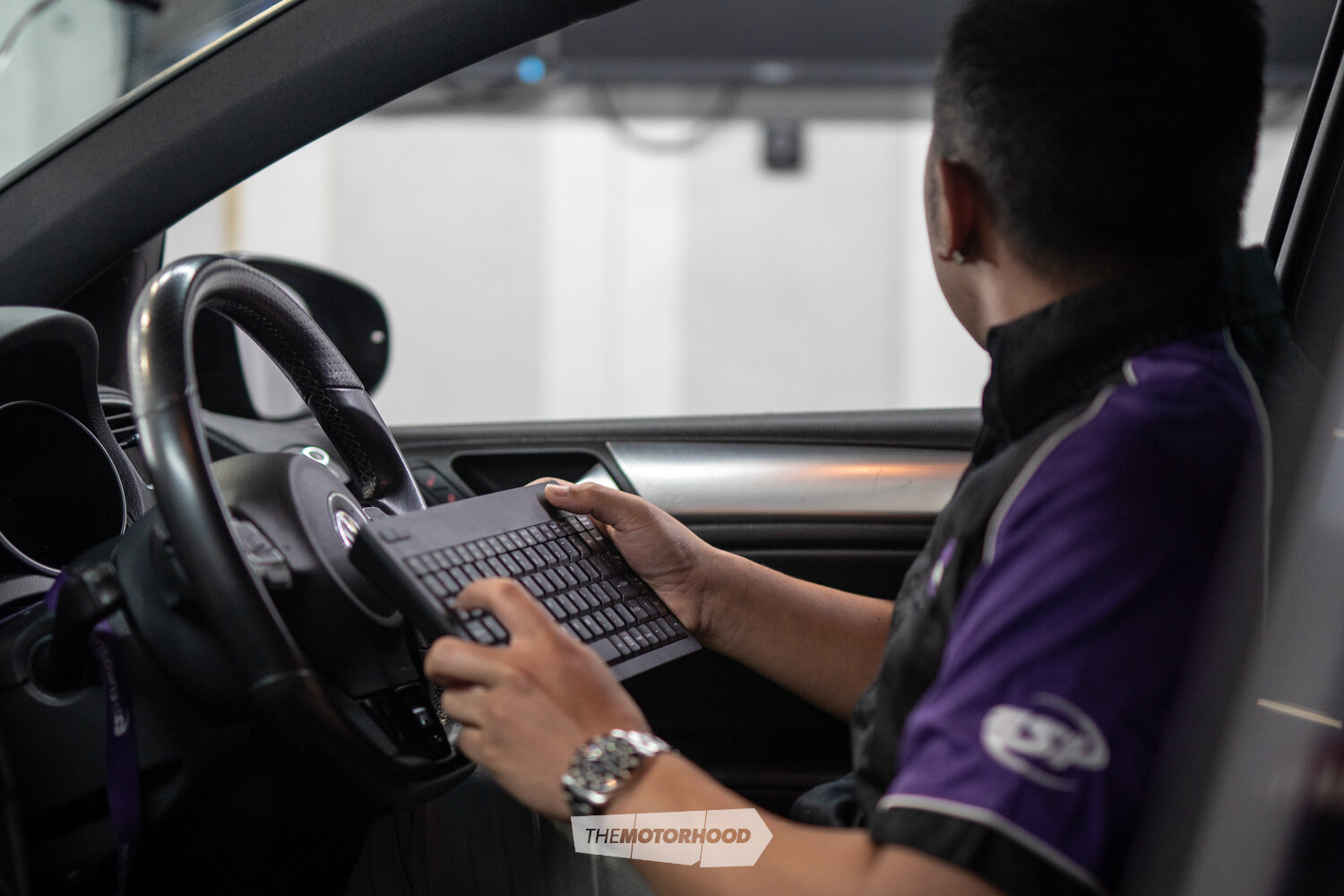Do you want a hot hatch that will dabble in GT-R quarter-mile territory, but with European luxury and comfort? We talk to EuroSurgeon about how the team built the ultimate street-going Golf R
Words: NZ Performance Car Photos: Glen McNamara
Last issue, in our Scrapyard Gains segment, we delved into what it would take to build a Volkswagen Golf GTI capable of similar performance to that of a Golf R Mk6. There’s nothing cooler than performance on a budget, and the Golf GTI is an incredibly capable hot-hatch platform straight from the factory. However, what’s next?
Have you clocked the Golf GTI game and you’re after a heap more performance? When it comes to tuning and modifying Euro performance cars in New Zealand, there aren’t too many people doing it extensively. Sure, there are maps and reflashes getting loaded onto German whips up and down the country, but how do you go further?
To answer this question, we dove into the minds of the mad scientists at EuroSurgeon, who have done just that. The platform in question: a 2010 Volkswagen Golf R. They’re in the semi-affordable realm now, and will cost you less than a well-used Mitsubishi Evo or Subaru WRX STi — with a dash of luxury and comfort to boot. They look fairly similar, so what’s the difference between a Golf R and the Golf GTI of the same generation? Well, simply put, the Golf R is the top dog, with a Haldex-controlled all-wheel-drive system and more power. Factory power in the GTI is 155kW; in the R, it’s 188kW.
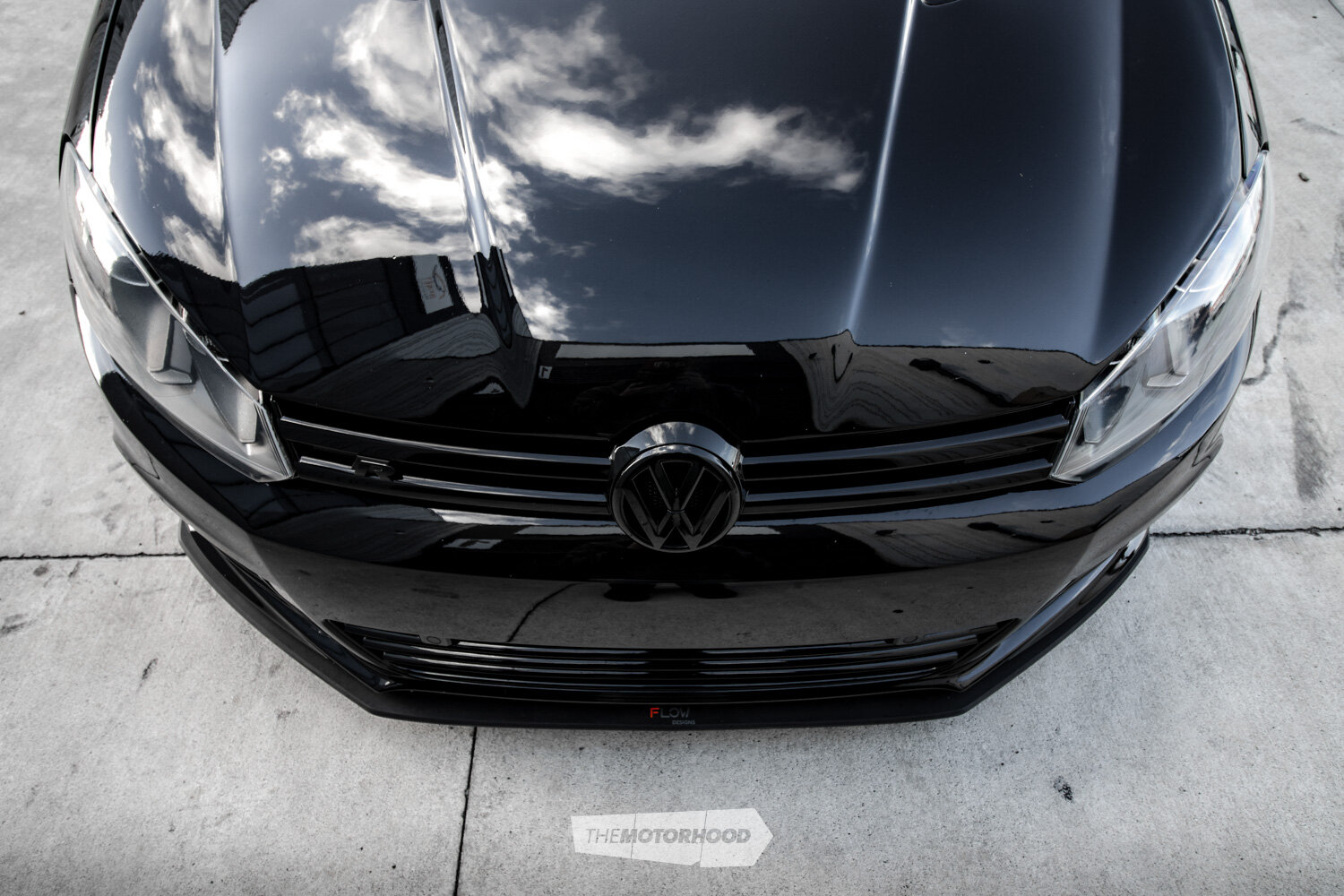
NZPC: Hey, EuroSurgeon. Thanks for talking to us about this monster and Golf Rs. First off, can you give us a background into how you got into cars in the first place?
Joe Clifton, Managing Director EuroSurgeon: I grew up around workshops, getting into dirt track racing at 13, started as an apprentice auto electrician at 17, left the car scene briefly while travelling Europe for a few years before coming back to New Zealand with one determination in mind, and that was to get back into cars and be the best I could be. Working on Mercs and BMWs prior to setting up EuroSurgeon, I fell in love with the performance and technology of them. Getting involved with the factory nav and entertainment conversions meant we were first in the world to do a number of these developments. Anyone who has met me will understand this inevitably motivated me to want new challenges, and the love of performance sent me into the tuning world; and here we are now, building some of the fastest Euros in New Zealand.
How did that progress into owning your own workshop specialising in European cars?
I always wanted to progress beyond what anyone else does, taking things to new levels, and that could never be done under someone else. Eight years later, with the talent and support of the awesome team I have managed to secure along the journey, and my amazing and very tolerant wife and kids without whom none of this would have been possible, we are opening our third workshop. My love of Euros means we are pure to the Euro world, and we never stray from that passion.
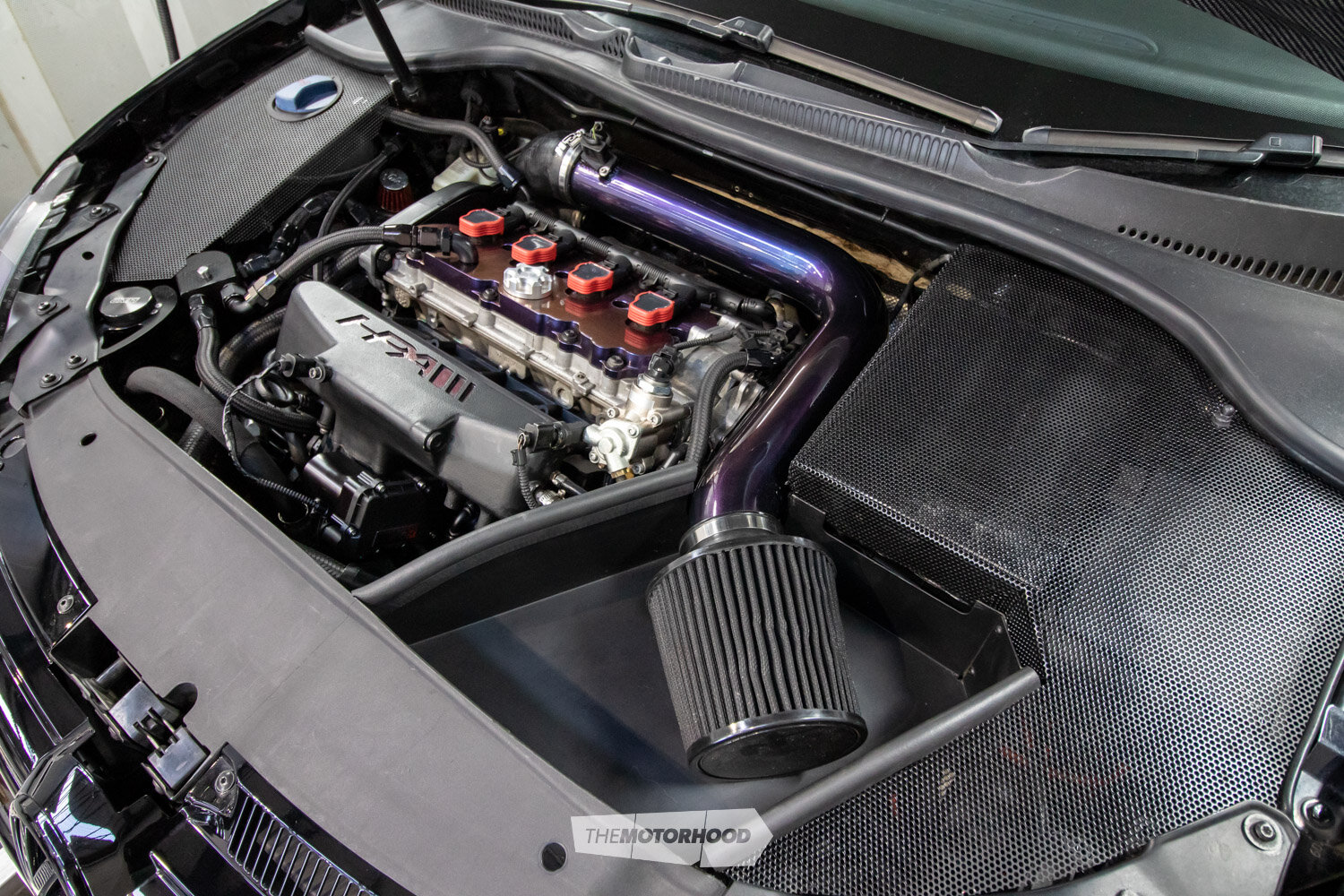
Let’s talk about this Golf R. How did the project begin and what were the initial goals with the build?
The Golf had been on the scene for a number of years, but we never saw its full potential due to poor workmanship. One day, sitting with Jack at lunch, I asked him where it was, and he sadly said it was parked up in the garage and barely running. Knowing how much this build meant to him, my words were instantly, “Where are the keys? I’m taking over this build; let’s do this!” Not knowing the extent of damage done previously, we picked up the car and essentially started the build from scratch. Jack then said to me, “Joe, keys are there — you do what you want with this car.” From there we progressed to take it to another level, not only with performance but also with styling.
What are the common steps with modifying a Golf R? We hear ‘stages’ being referred to often with these cars, so where does it put this particular Golf?
‘Stages’ is a bad term, really; it’s simply a point of what hardware is installed. In fact, in the back end of the tuner world, it’s classed as slang. A car is tuned to what hardware is installed. It’s dependent on the condition of the car, and no two cars are the same. The word ‘stage’ has simply become an abbreviated term to explain what’s been done. This Golf is essentially what’s classed as stage three, but that can be anything from hybrid turbo through to built-engine big turbo like this car.
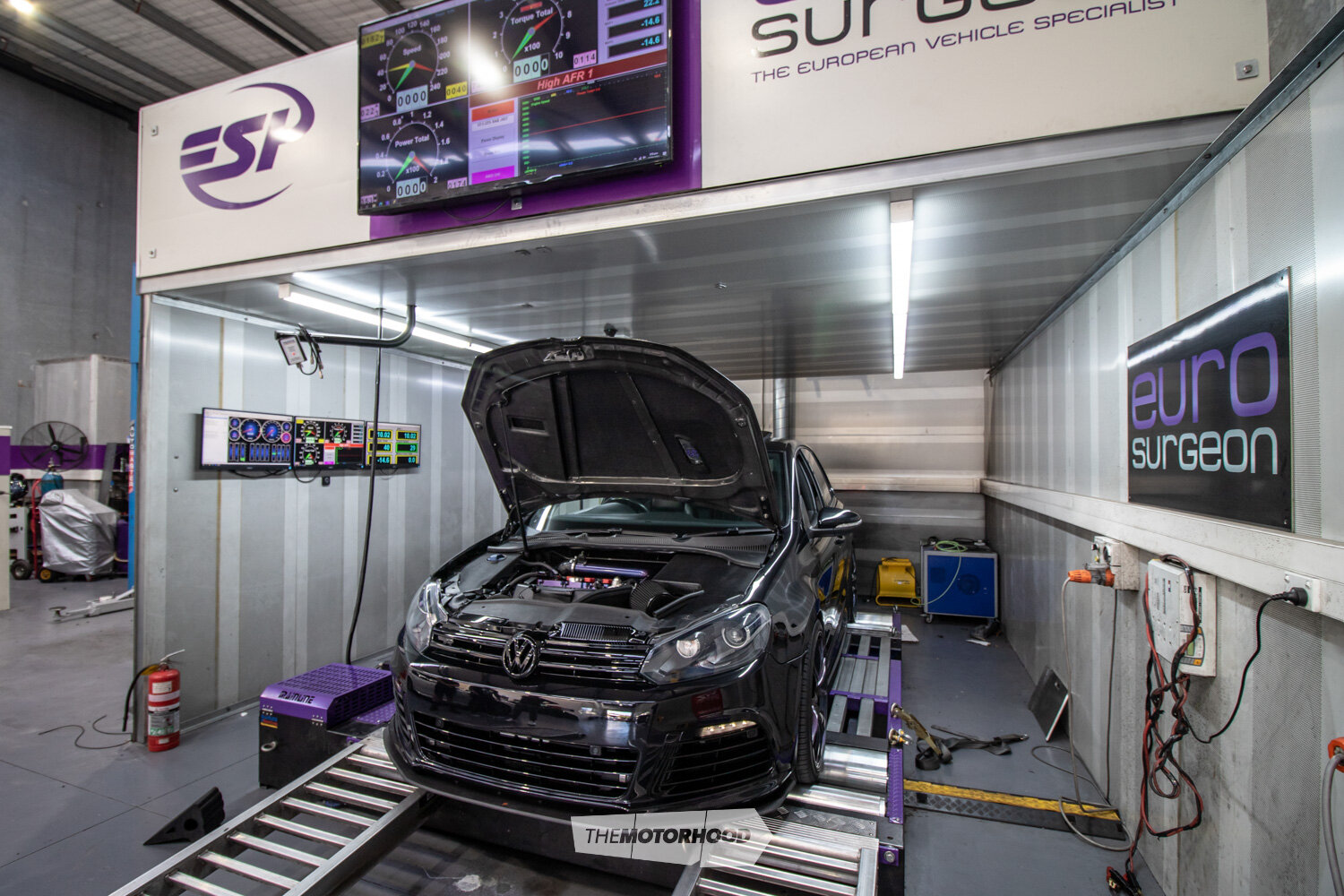
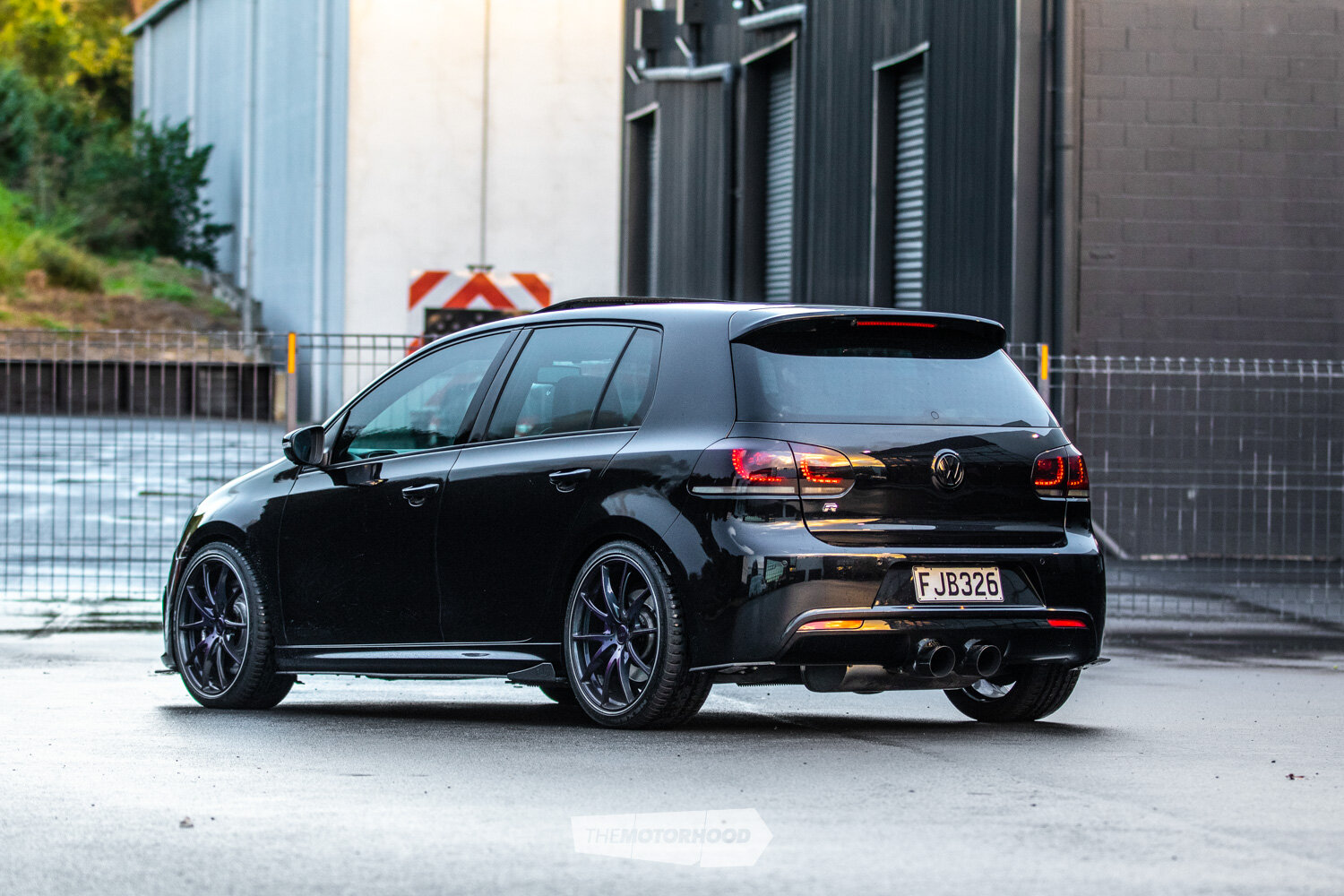
When modifying a Golf R, what are some things you need to be aware of now that they’re a decade old?
Maintenance — the key to any performance vehicle is maintenance. Unfortunately, many cars haven’t been looked after during that 10 years, which is why they get a bad rep. I would take a well-maintained high-kilometre car over a low-mileage car that’s lived a dealer service life.
Performance-wise, what out-of-the-box Japanese car do you think the Golf R stacks up against in factory form?
It’s hard to say. I’d say the best comparison is an Evo, but I must say so far this car hasn’t lost a race.
Surely you’ve taken this down the quarter-mile — what sort of times does 343kW at the wheels get you in a Golf R, and are they straightforward to launch, etc.?
We had an issue last trip down the quarter. We got to three-quarter track and the fuel bucket had drained, putting us into limp mode. We coasted across the finish line at no boost with a time of 11.2 seconds. We’ve got plans to get back down there for a private track day soon.
Are you able to explain the difference between the manual gearbox offered in a Golf R and the DSG version, and the pros and cons of each one?
The DSG is a dual-clutch box, meaning that the next gear is predicted and ready to engage instantly, at a speed no human could ever change gear. The manual has a very different feel, and, although [it] is the true driver’s car, it just cannot compete with the DSG.
What are your thoughts around the Euro tuning scene here in New Zealand — is it taking off or much the same?
We are doing everything in our power to grow this — not just the tuning scene but the entire car scene. We are passionate and preaching to bring back the car scene I grew up in: year 2000 fast and furious styles. Our last car meets have attracted more than 100 Euro cars. Currently, we are setting up a first in New Zealand racing academy, where we have built 10 fully caged Euro track cars to teach 14- to 17-year-olds how to race. The ultimate goal is to build passion and skill from our youth racers, who are the future in New Zealand motorsport.
Why was the Golf R platform chosen over the sister car, the Audi S3?
Styling, and the Golf is the true go-kart!
Is it difficult to source parts to upgrade European cars in New Zealand?
It’s becoming a lot easier, and we have parts suppliers around the world so we can generally land parts from within a week.
What is next for this particular Golf R?
Once we have run the final 10-second pass, it’s going to be a show car and weekend driver. Every time Jack or I drive this car, the smile is just insane. I daily drive a 2018 B9 RS4 and Jack drives a big turbo RS3, and those make both of us smile daily, but they just don’t compare to the Golf.
Do you think people looking into Golfs should consider the GTI or, if they’re looking at building a more powerful project, jump straight into a Golf R?
That’s a very personal thing. Personally, I’m not into the FWD wheel-spin life — I like to put my foot down and get to speed. It’s one of the main reasons I moved from a 750hp [559kW] daily RWD car to the RS4.
Thanks for taking the time to talk to us about tuning and modifying Golf Rs; we’ll no doubt see this weapon around and about. Cheers!

